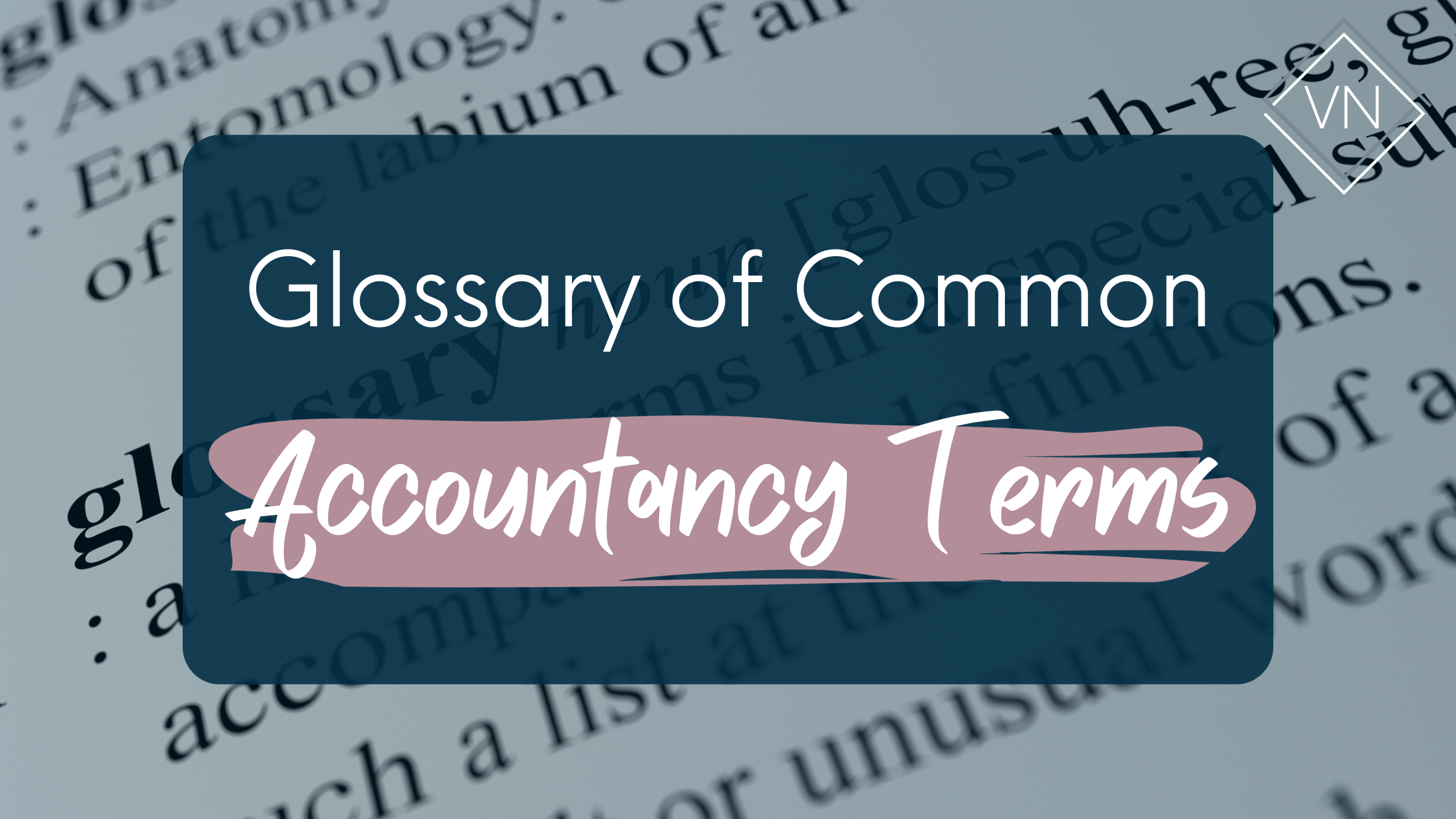Glossary of Common Accountancy Terms
A
-
Accounting is the interpretation and presentation of the financial data to the business owner and any potential investors. What you need in the first instance, to help you organise your accounting, is a Bookkeeper who will help you to record and organise the data.
B
-
This statement provides a snapshot of your business's financial position at a specific point in time, showing your assets, liabilities, and equity. It can help you understand your business's liquidity and solvency.
-
Bookkeepers are often qualified accountants and can see processes through from start to finish. If they are not they may work closely with an accountant. Many businesses choose to do their bookkeeping themselves (and then work with an accountant at their year end).
-
Bookkeeping is the process of recording all financial transactions related to your business. It's important because it provides an accurate and up-to-date picture of your business's financial health. By keeping good records, you can track your cash flow, monitor your expenses, and prepare accurate financial statements and tax returns.
C
-
The movement of money in and out of your business, including revenue, expenses, investments, and financing activities.
-
A tax on profits earned by limited companies and other organisations.
-
The costs that are directly attributable to the revenue the business receives, like items purchased for resale, labour costs if the business is involved in the manufacture of goods, shipping costs of goods sold.
-
Cash and other items like stock/inventory and amounts owed to the business that are expected to be converted to cash within 12 months.
E
-
The difference between your business's assets and liabilities, representing the ownership interest in your business.
F
-
Financial statements provide a snapshot of your business's financial position and performance over a specific period of time. They include the profit and loss statement, balance sheet, and (depending on the size or structure of your business) a cash flow statement.
-
Physical items that are held for use in the business such as property, equipment and vehicles.
G
-
Other costs associated with running your business such as overheads like rent, utilities, insurance and office costs, staff costs including salaries, training, and travel, and legal/professional costs.
-
This is revenue less cost of sales. This tells you the profit margin between how much it costs you to make and sell the goods/services and the sales price, which in turn enables you to calculate how much profit is available to cover your other overheads. If direct costs are increasing but overheads are not you can monitor the margin and act on increasing revenue prices.
I
-
A tax paid by sole traders and partnerships on profits from their trade. It is also due on most other forms of income and will either be deducted at source under PAYE or paid via a self-assessment Tax Return.
L
-
Any debts or obligations that your business owes, such as loans, accounts payable, and taxes owed.
-
A limited company is a separate legal entity from its owners. This means that the company can enter into contracts, own property, and sue or be sued in its own name. As a director of a limited company, you have limited liability, which means that your personal assets are protected if the company runs into financial trouble. Limited companies must be registered with Companies House and have a formal set of articles of association and a memorandum of association.
-
The amount of money your business loses when expenses exceed revenue.
N
-
A tax paid by sole traders, employees and employers to fund the UK's social security system.
-
This is gross profit less general expenses. This tells you how much money you are making for you (if you are a sole trader/partnership) or the company (if you are an incorporated business). Some expenses are adjusted using HMRC's guidelines but this figure will be the starting point for calculating the Income or Corporation Tax liabilities due.
P
-
A partnership involves two or more individuals working together to run the business. In a partnership, all partners share responsibility for the business's finances, liabilities, and taxes. It's important to have a formal partnership agreement in place to define the roles and responsibilities of each partner, as well as how profits will be shared.
-
Pay As You Earn, a tax deducted from employees' salaries to pay income tax and National Insurance contributions.
-
This statement summarises your business's revenues and expenses over a specific period of time. Management Profit & Loss Statements can be prepared monthly or quarterly to provide regular updates on business performance (often in line with VAT reporting periods) as well as providing the annual summary for tax purposes. It can help you understand whether your business is making a profit or a loss and where you may need to make adjustments to improve your bottom line.
R
-
The income your business earns from the sale of goods or services.
S
-
A sole trader is a self-employed individual who owns and operates their own business. This is the simplest and most common form of business ownership, as it requires no formal registration with Companies House. As a sole trader, you are personally responsible for all aspects of your business, including finances, liabilities, and taxes. You will also need to file a self-assessment tax return each year.
T
-
Tax compliance is essential to avoid penalties and fines. As a business owner, you are required to register for various taxes, file tax returns, and pay taxes on time.
V
-
Value-added tax, a tax on the value added to goods and services at each stage of production and distribution.


